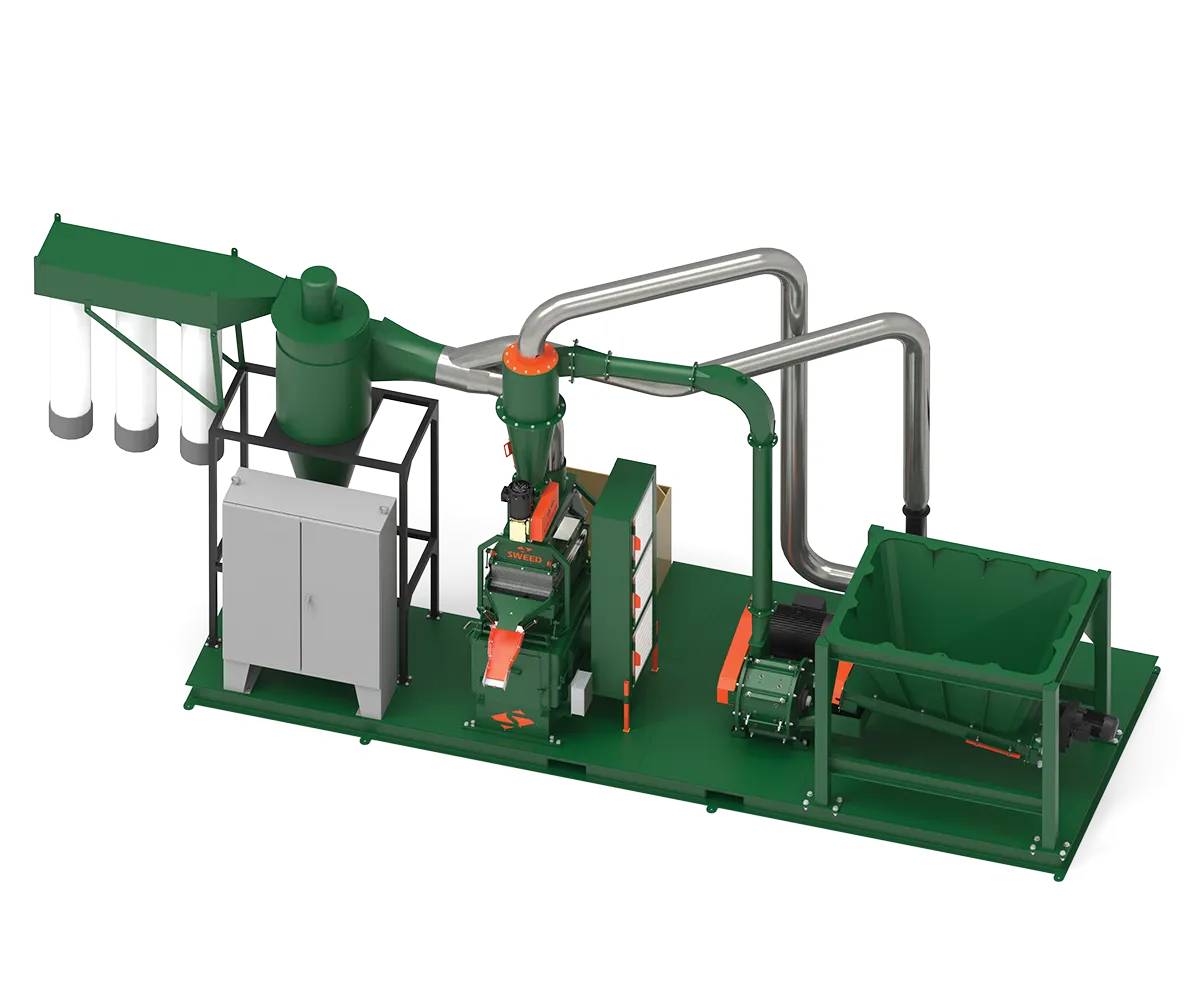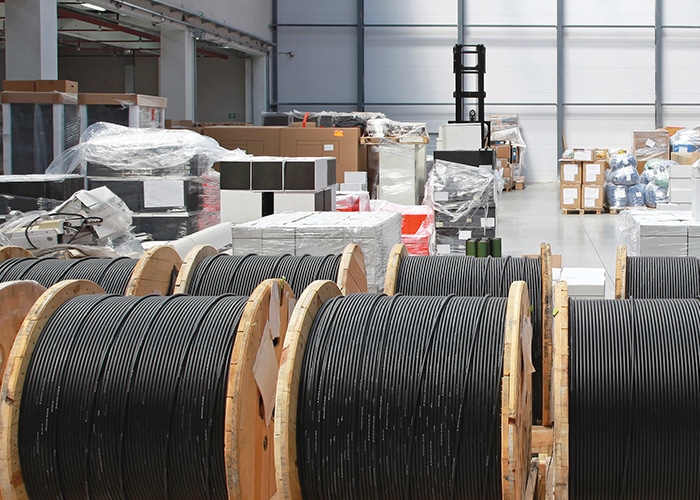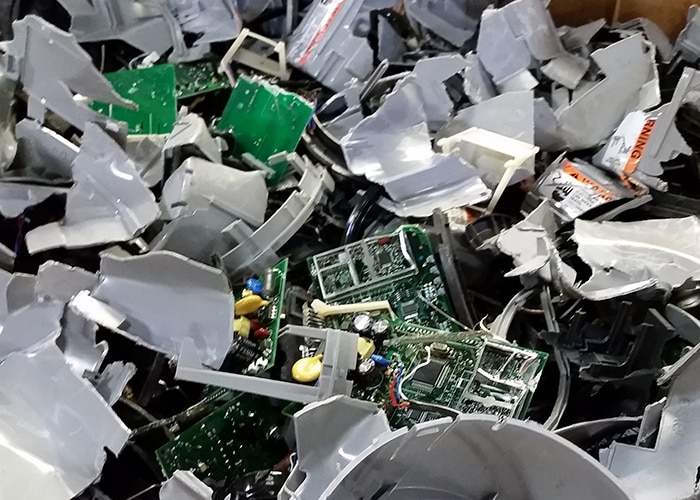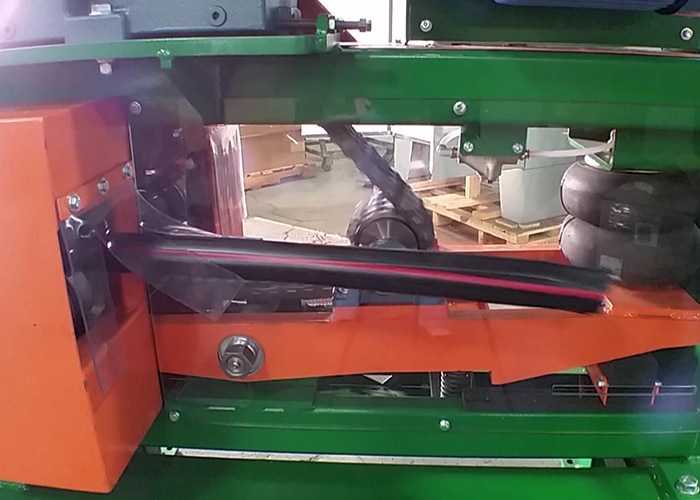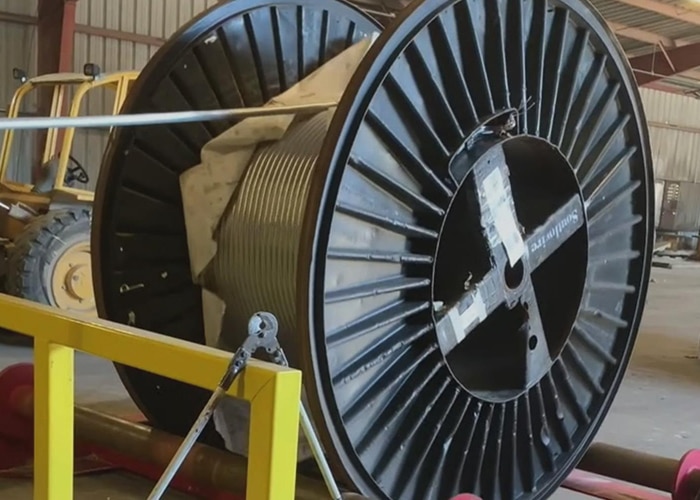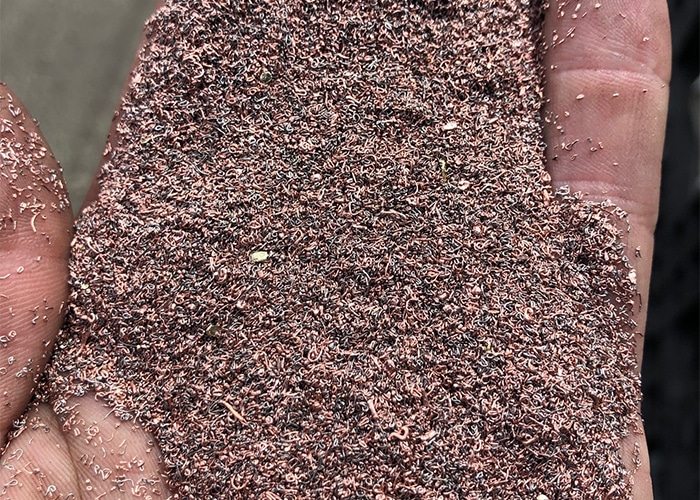Maximize Your Material Recovery
Copper is one of the most valuable metals in the recycling stream, but only if you can recover it efficiently. SWEED copper recovery systems are designed to maximize yield from scrap wire, cable, and other copper-bearing materials, delivering clean separations, minimal manual labor, and exceptional ROI.
The Real Cost of Inefficient Copper Recovery
You may already be selling scrap. But if your system isn’t fully liberating and separating copper, you’re losing profit with every load.
- Copper fines left in insulation go unsold or are downgraded
- Partial separation creates contaminated output
- Low-purity copper is undervalued or rejected by buyers
- Manual processing increases labor cost and risk
Every percent of unrecovered copper is lost money. SWEED helps you get it back.
The SWEED Difference
Increase Your Recovery Value
SWEED systems aren’t just machines, they’re purpose-built solutions engineered to maximize copper recovery and minimize processing pain.
- High-purity copper separation
- Systems scaled from 2,000 to 25,000+ lbs/hr
- Proven on telecom, ACSR, #2 ICW, ASR, and more
- Modular & expandable as your needs grow
- Made and supported in the USA
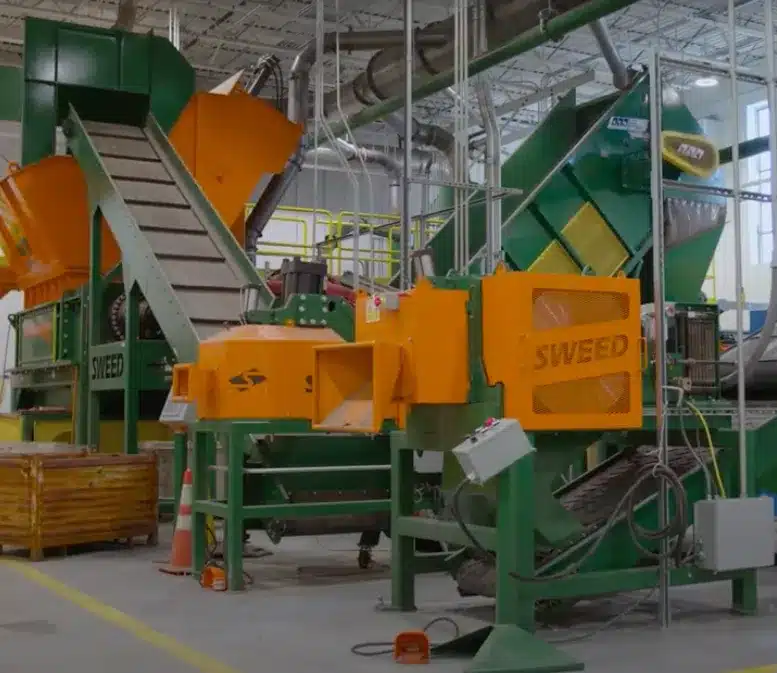
How Copper Recovery Works
Intake & Preprocessing
The Challenge
Scrap rarely shows up neat and ready to process. It’s tangled, oversized, mixed, and wrapped in layers of insulation which slows down production before it even starts. This makes efficient processing nearly impossible without the right equipment upfront.
Without a solid intake process, you waste hours to material prep, risk damaging equipment downstream, and can end up with material from contamination handling errors. Operators often spend more time fighting jams or cutting wire by hand than actually processing it.
The Goal
Prepare incoming material for smooth, automated downstream flow. That means clearing ferrous material early, reducing cable size, and removing insulation. Clean, consistent input leads to cleaner, higher-yield output.
SWEED Solutions
- Cable Cutters (CA Series): Cuts heavy, long, or armored cable into manageable lengths.
- Sheathing Slitters (SS6K): Strips outer jackets from telecom or high-diameter cables.
- Prechoppers (PCR Series): Heavy-duty single-shaft shredders engineered for bulk feeding and rapid reduction of scrap materials like wire harnesses, auto-shredder residue (ASR), and bulk wire.
- MS Series Shredders: Rugged single-shaft machines designed for aggressive, low-speed, high torque reduction of heavy-duty materials like large-diameter bundled telecom cable or aluminum copper radiators (ACR).
- Magnetic Cross-Belts: Automate early ferrous separation.
Everything downstream performs better when your intake system does the heavy lifting first.
Chopping & Granulation
The Challenge
Copper can’t be efficiently separated unless it’s fully liberated from its insulation, and not all chopping systems are up to the task. Undersized motors, dull knives, poor screen sizing, and missing secondary processing all lead to inconsistent granule sizes, clogs, excess dust, and copper stuck in plastic where it can’t be recovered.
The Goal
Consistently size and liberate copper from insulation without overprocessing the material. SWEED’s chopping systems are tuned for different scrap types and deliver a clean, controlled output stream that’s ready for separation.
Sweed Solutions
- Granulators (SG Series): High-speed cutting systems designed for precise sizing of materials, delivering consistent granule output while minimizing wear on components for longer run times and reduced maintenance.
- Turbo Mills (TM Series): Essential for processing #2 copper wire and copper fines, the Turbo Mill uses impact and agitation to convert loose copper strands into dense, flowable “balled” particles. This boosts throughput, improves separation efficiency, and delivers higher-purity copper.
- Scrap Choppers (5503 / 5703 XHD): Built for tough, linear materials like ACSR and telecom wire, these heavy-duty choppers can operate as stand-alone units to process cable directly off reels or be integrated into a full wire chopping system for continuous processing. In addition to preparing material for further processing, they help reduce shipping costs by eliminating the need to send out heavy, expensive reels, allowing companies to reclaim their reels and ship chopped cable in space-efficient Gaylord containers.
- Metering Feeders: Deliver a consistent, controlled flow of material into each stage of the wire chopping system, helping to prevent surges or backups that can lead to clogs, uneven processing, or unnecessary wear on downstream equipment.
Separation & Recovery
The Challenge
Even when chopped, copper isn’t automatically clean. Lightweight insulation, aluminum fragments, and stainless or magnetic dust can remain. Without advanced separation, your copper remains contaminated and your resale value drops.
The Goal
Fully separate copper from plastics, steel, aluminum, and stainless in a way that minimizes labor and maximizes resale value. SWEED designs systems to deliver up to 99.9% copper purity, even from challenging wire types.
Sweed Solutions
- Air Tables (G Series): Use a combination of controlled airflow and oscillation to separate material based on density, effectively isolating copper from aluminum, plastic, and other non-metallics to maximize recovery and purity.
- Zig-Zag Separators: Use controlled air flow to remove lightweight contaminants like film, fluff, or dust from the material stream, improving purity and preparing the copper for higher-quality recovery downstream.
- Magnetic Head Pulleys & Stainless Steel Separation: Automatically remove ferrous and stainless steel contaminants from the material stream to protect downstream equipment, reduce wear, and ensure a cleaner, higher-value final product.
- Dust Collection Systems (SDC Series): Improve air quality and keep systems running longer by reducing buildup that leads to clogs, wear, and unplanned maintenance.
- Auger & Sifter Outfeeds: Efficiently separate and route plastics, fines, and other residuals into designated discharge streams, reducing contamination in the copper and keeping the downstream system running clean and consistent.
Turnkey Copper Recovery Systems
Not every operation needs a fully customized copper recovery line, but some do. SWEED offers both. If you're ready to get up and running quickly, our pre-engineered systems like the S2000 Series or Tailings Clean Up unit deliver fast payback and proven results. If your needs are more complex, we’ll design a fully custom system to match your specific throughput, material mix, and facility layout.

S2000 Copper Chopping Line
The S2000 line offers two pre-configured systems tailored for processors running up to 2,000 pounds per hour. These systems combine SWEED’s most efficient chopping and separation technologies into a compact footprint.Each includes a prechopper, granulator, magnetic separation, and dust collection, and is designed for simple integration into existing plant operations.
The S2000+ builds on this configuration by adding a Turbo Mill, which boosts copper liberation and improves overall material purity.. The S2000 Series are ideal for companies that need industrial performance without the overhead of a custom build.
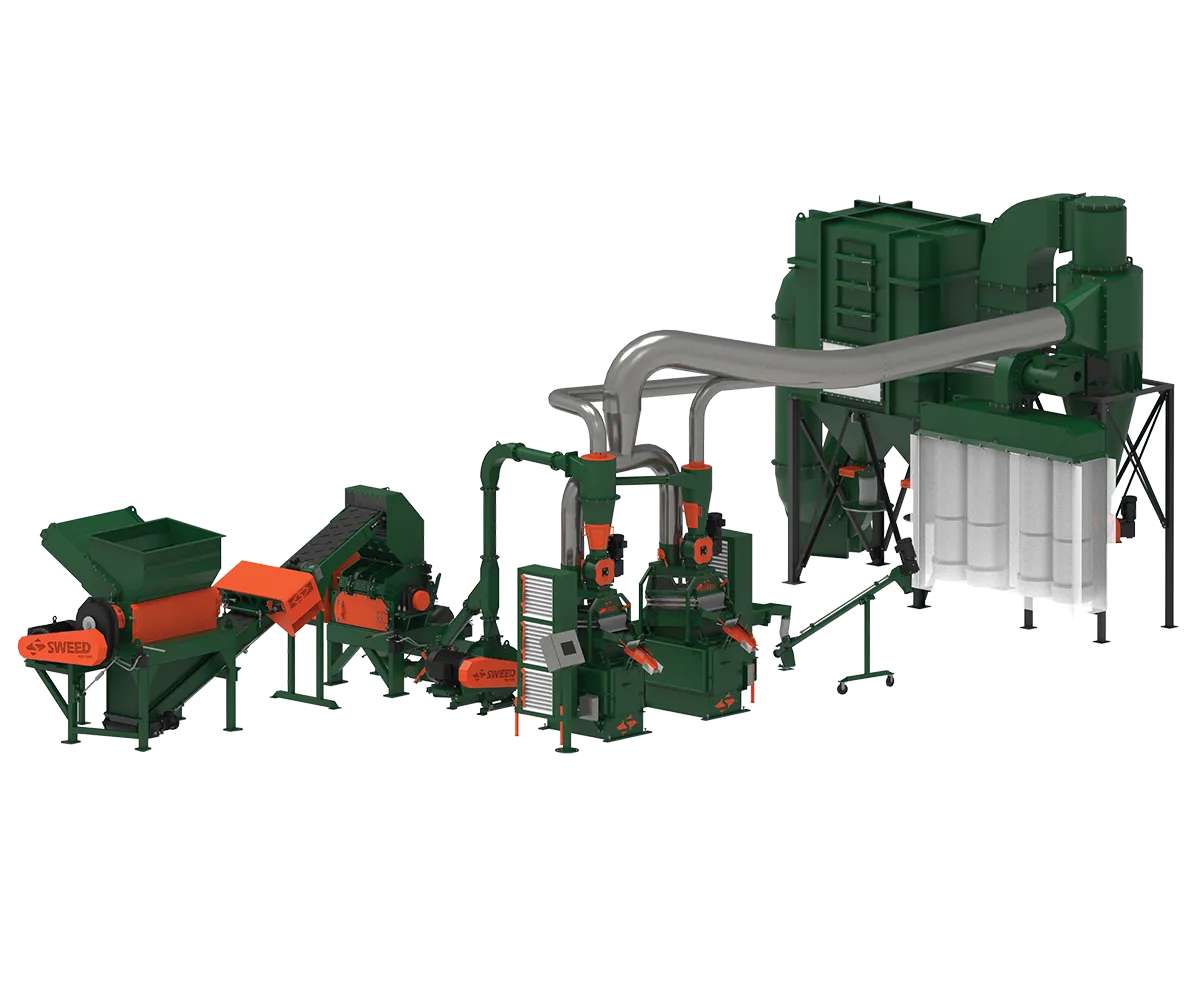
Tailings Clean Up System
Most processors throw away real money every year by underselling or discarding tailings. SWEED’s Tailings Clean Up System is a powerful add-on designed specifically to extract additional copper from this overlooked material stream.
- Accepts tailings via auger, conveyor, or forklift-loaded hopper
- Available in 1,000, 2,000, and 3,000 lbs/hr models
- Uses your existing crew. No added labor required
- Pays for itself in as little as 12–24 months
SWEED systems are designed to handle tough material streams when configured appropriately from the start. But if a recycler takes on new material that their current system wasn’t built for (SWEED or otherwise) the TCU can be installed as a standalone unit alongside the primary system or siloed for dedicated tailings recovery, making it a flexible option for boosting copper yield without modifying the main line.
